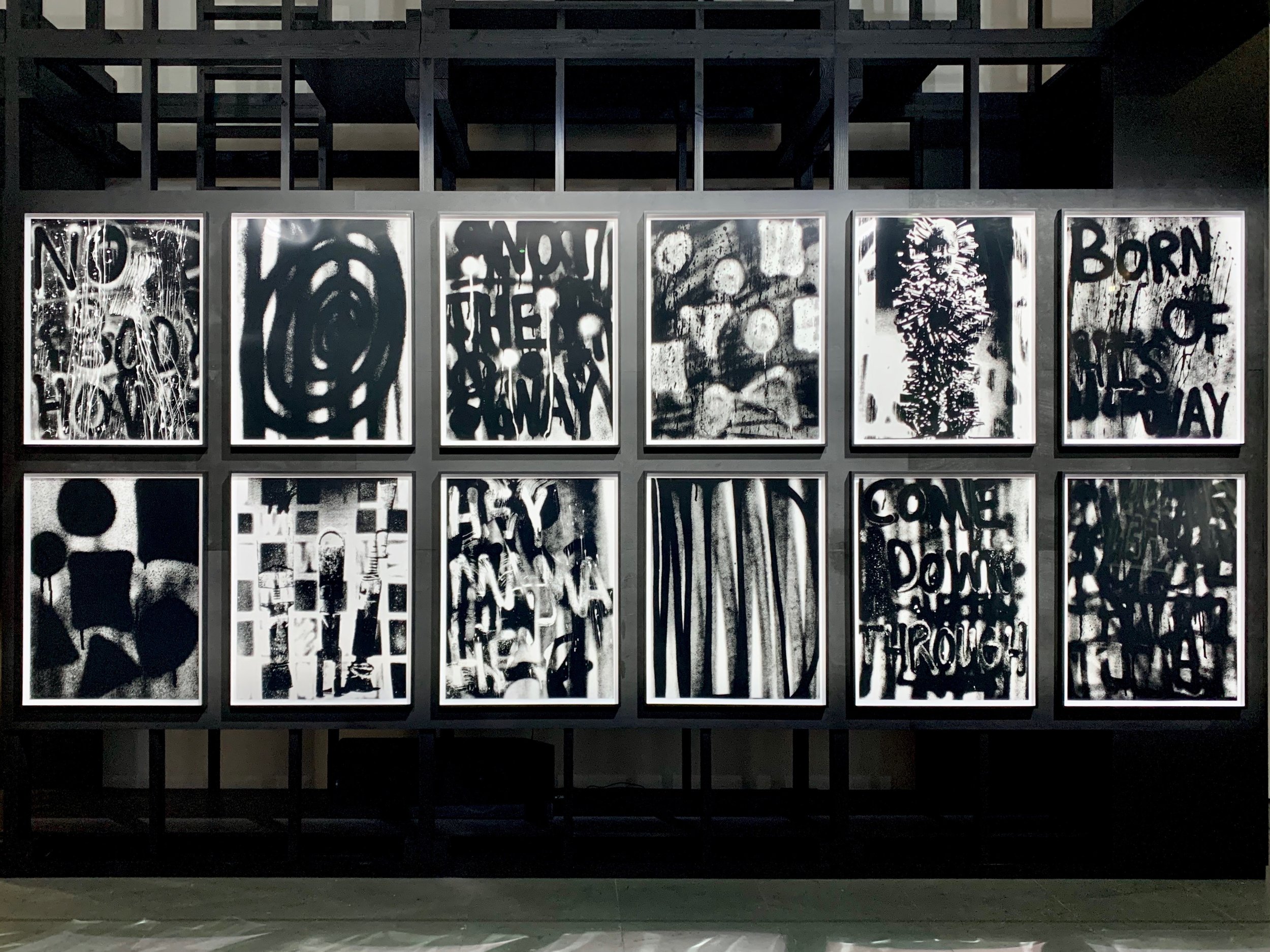Back on the subway, inside the E train, barrelling away from Chelsea through the tunnel. In the years since leaving New York, my relationship with the city has matured. I know this place has permanently imprinted itself on me. None of the train's jerky movements throw my composure as we pull into Penn Station with a bump. I’m en route to MoMA—no map, just an impeccable inner compass. A homeless man stands a few feet away, tearing a white tissue and spreading it out before him as if he’s feeding some imaginary pigeons. We share a comfortable silence.
The only remaining photo from my public (illegal) wheatpaste series ‘The White Man’s Consternation.’ Circa Brooklyn, 2008.
I am specifically visiting MoMA out of all the city’s storied art museums to see Adam Pendleton’s exhibition. I’ll wander the halls like I did so many times in another life before, but there’s no longing nostalgia left for those places. Today I’m rooted in the present. Pendleton’s work captivates me, beautiful black and white abstract paintings featuring silkscreens of enlarged gestural spray strokes, sometimes with words incorporated in a hand-formed style. Our styles share striking parallels, but his work inspires me rather than sparking competition.
Entire years have gone by where the paintings on these walls didn’t move me. Maybe I was spoiled by good art and lofty ideals, and needed time away to come back with fresh eyes and an open mind. One time in my early twenties, I skipped work to smoke a joint and play hooky at the museum. Another autumn day eons away, with the same cool tip to the air. Sure enough I did just that, only to arrive and find the place was closed. That’s the day it was forever etched into my memory—museums are closed on Tuesdays.
Quick shot from the Adam Pendleton show at MoMA.
My relationship to New York has changed as I’ve changed. Some aspects develop, other stalwarts stay. I’ve always been an observant person. In the Lower East Side, our apartment building featured a locked gate on its stoop that I could sit inside—I called it the shark cage. From there I could watch drug deals and street-clearing fights alike. Observation often proves the precursor to judgement. Safe in the shark cage, I could watch with the safety that removal offers.
While studying at SVA I had a professor named John Foote, an older gentleman with white hair and the voice of a leading man from Hollywood’s golden era. He told us to copy work by artists who inspired us. “Eventually, your style will come out through it,” he reasoned. When I started writing I employed these tactics, kicking off with Jack Keuroac quotes and building my own narratives from there. The method works. Other artists’ work can be goldmines. Scouring their reserves multiplies the treasure rather than stealing some nonexistent market share. It’s very difficult to keep one’s inspirations out of one’s work. Maybe impossible, even.
For as long as I can remember, those inspirations have been everywhere around me, even beyond the boundaries of a canvas or pristine white gallery walls. Lately I’ve been walking around the neighborhood surrounding my studio, known as either ‘the Tin District’ or ‘West Dallas,’ depending on who you ask. I spend these strolls observing the signage of hotdog stands and auto shops alike. After percolating on Pendleton’s show I head uptown to the hotel where my brother is staying on Park Avenue. I pop into the bar for a negroni while they get settled.
In the heavy and dark mahogany watering hole there’s a scattering of tables surrounded by older men with much younger sunken-cheeked women draped over them. I glance occasionally without staring. One such couple has just headed up to their hotel room, bellies sated with food and attention. Just another Tuesday on Park Avenue. More men line the bar in blazers with pocket squares, an after-work ritual before retiring to families at home or empty apartments far away from failed marriages. Their wives are accustomed to the boys’ need to blow off steam.
Ice clatters in metal shakers. Outside, the night air feels invisible. I brought a light jacket with me, thinking October in New York might be brisk. Instead, I found the perfect temperature for people watching—the perfect temperature to maintain the crucial suspension of disbelief. In my head I’ve dubbed myself “F. Scott Fitzgerald with a paint marker in my pocket.”
Work by Lady Pink and Jenny Holzer at MoMA.
Observation is an excellent tool for any artist, but only when bereft of judgement. Like my waning nostalgia for the old New York, I notice the propensity for judgement fading. I think my relationship with the city began to change back in 2014, when I embarked on a commission painting numerous murals for the Pod Hotels here in NYC—a project which required consistent travel between this city and Dallas over the course of two years. Suddenly return trips to New York no longer felt like arriving late to a party that's already ended. I was simply a working artist on the job in New York City, the place I was born.
When I’m comfortably occupied with a greater goal, the rest of the world falls away.
A magical autumn night in New York, before the leaves change and holiday decor creeps in. A loaded moment in that, if caught by chance, feels like a quietude, a respite. I’m nursing my negroni, holding down the corner of the bar, subconsciously unpacking the insights gleaned from Pendleton’s work and perhaps pairing them with the phenomenon in front of me. The anonymity feels like an old trench coat that fits just right.
Although there’s nothing left for me to prove to New York, coming here makes me anxious to get back in the studio. The clout, the collection of work from the highest caliber, how could I feel any other way? Steeped in the ideal climate for collecting data, the new work within me lies in wait until my return.
Work by Joan Mitchell at MoMA.




